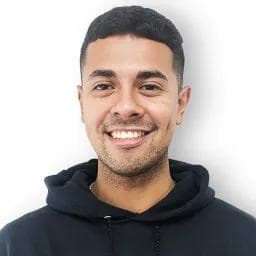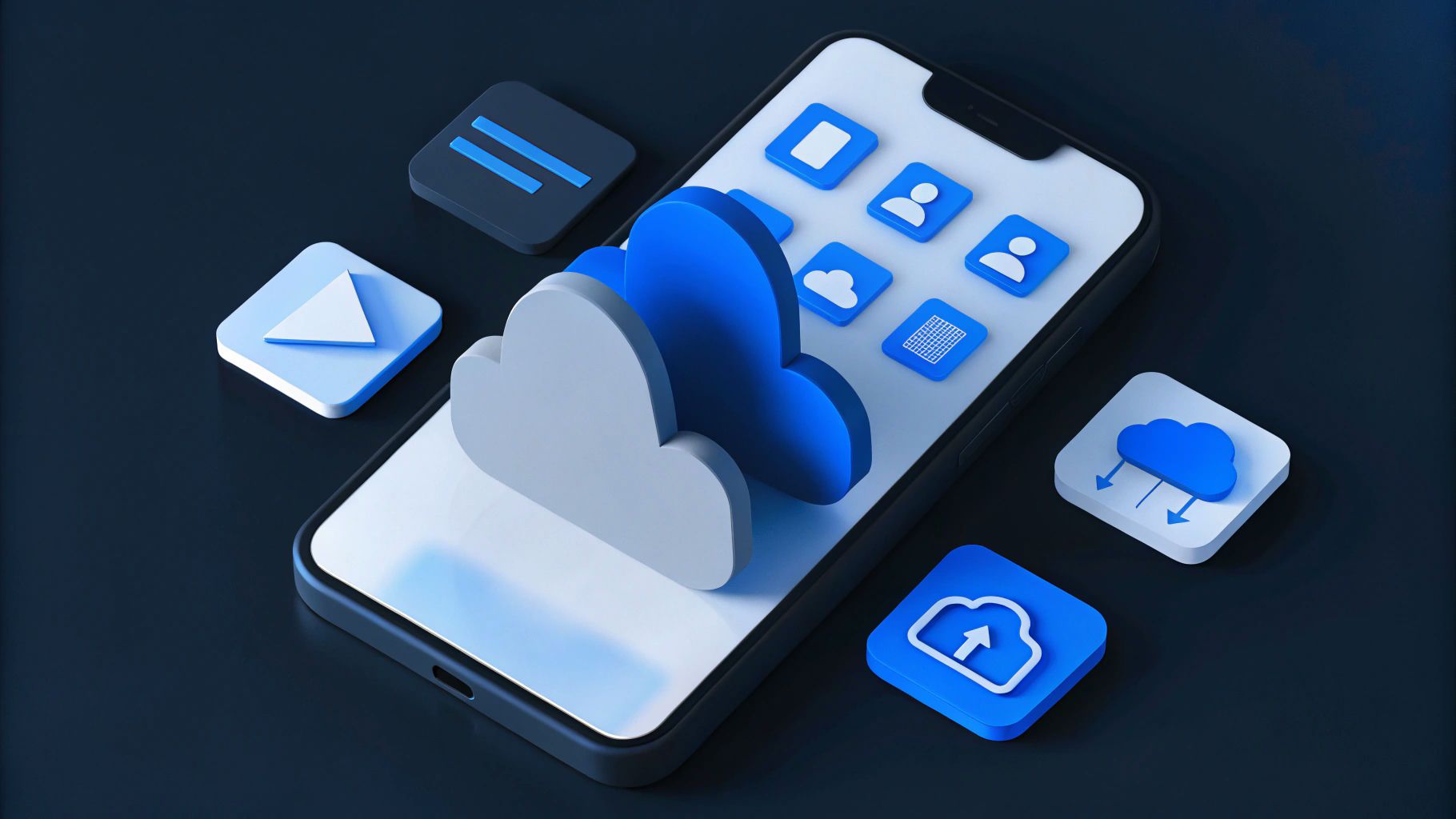Most CMS platforms were built for a world where websites were the only place content lived. That world doesn’t exist anymore.
Today, your content needs to show up across product interfaces, mobile apps, and even third-party platforms.
An API-first CMS is built for that kind of complexity because it treats content like data—structured, reusable, and ready to be pulled into any front-end. It gives teams more control over content delivery and digital experiences.
In this post, we’ll break down what an API-first CMS actually is, how it compares to traditional and headless systems, and when it makes the most sense to use one.
In brief:
- An API-first CMS separates content from presentation, allowing distribution across websites, apps, and other digital platforms.
- Unlike traditional CMSs, it is designed from the ground up to function through APIs, which makes integration with other tools and systems much easier.
- This approach supports multi-channel content delivery, and allows businesses to scale and adapt to new technologies without overhauling their systems.
- While API-first CMS platforms offer flexibility, they require technical expertise for setup and management.

What is an API?
An Application Programming Interface (API) acts as a messenger between software systems, allowing applications to communicate without understanding each other's internal workings.
Like a restaurant waiter taking your order to the kitchen and returning with your meal, APIs handle requests and deliver responses between systems.
APIs power everyday digital interactions from booking flights to checking bank balances. They come in four types: public (available to any developer), partner (restricted to business partners), private (used within organizations), and composite (combining multiple API calls).
What is an API-First CMS?
An API-first CMS is built with the assumption that your content won’t live in just one place.
It’s designed to serve content over APIs, not just to a website, but to apps, product interfaces, help centers, customer portals, and wherever else your audience interacts with your brand.
The CMS isn’t concerned with how your content gets displayed. It focuses on structuring and delivering that content cleanly and consistently.
This model is fundamentally different from traditional CMS platforms that combine content management and front-end rendering in a single monolithic system. In those setups, content is often trapped inside page templates or tied to rigid themes.
Even updating a CTA in multiple places can turn into a dev ticket.
For a fast-moving startup or an enterprise managing multiple products, that kind of friction doesn’t scale.
Some CMS platforms try to bridge the gap by adding API access to a legacy system. But there’s a difference between exposing an API and designing around it. API-first CMSs are built with developer workflows in mind. That means consistent endpoints, predictable schemas, versioning, and integration support.
You don’t need workarounds to pull content into your app, or to stitch together a localized campaign across multiple channels.
For marketers, this architecture unlocks structured content that’s reusable across contexts. A single product description can power your website, onboarding flows, sales decks, and partner listings without rewriting or duplicating.
For developers, it means you can build modern front-ends in whatever stack you prefer, without being forced into a CMS’s templating system or waiting on marketing requests that block deployments.
API-First CMS vs Traditional vs Headless CMS
When choosing a CMS, it’s important to understand the differences between traditional, headless, and API-first architectures.
A traditional CMS:
- Combines backend and frontend within a single system.
- Manages content creation, storage, and presentation in a tightly integrated environment.
- Limited flexibility for multi-platform content delivery.
- Often relies on built-in themes and templates for easier customization.
- Examples include early versions of WordPress and Drupal.
A headless CMS:
- Fully decouples the content repository from the frontend.
- Content is delivered only through APIs, allowing use on websites, apps, and other digital platforms.
- Provides maximum flexibility but lacks built-in presentation tools.
- Requires more development effort to build and manage frontends.
- Examples include Contentful, Strapi, Sanity.
An API-first CMS:
- Designed from the ground up with APIs as the primary method for content delivery and management.
- Maintains the separation of backend and frontend while offering integrated tools for developers and content editors.
- Often includes built-in content preview, workflow management, and editor-friendly interfaces.
- Balances flexibility with usability, making it suitable for enterprises that need scalable, multi-channel content delivery.
- Examples include Directus, ButterCMS, Kontent.ai.
How Does an API-First CMS Work?
An API-first CMS separates content management from content delivery.
It acts as a centralized backend where content is created, structured, and stored. Delivery happens wherever your product or experience team needs it, through APIs.
Here’s how the workflow typically looks:
- Content modeling: Teams define structured content types, such as product features, customer testimonials, or integration guides. They are modular and reusable objects with clear relationships and constraints. This modeling step is foundational and often done collaboratively between content, design, and engineering.
- Content creation and governance: Content editors and marketers work in a web-based UI to add or update entries, with built-in workflows for versioning, localization, approvals, and more. Since the content is structured, teams can easily maintain brand consistency.
- API delivery layer: Content is accessed via REST or GraphQL APIs, often with support for content preview, filtering, and querying by field. It gives developers total freedom to fetch only what they need and present it however they want.
- Frontend agnostic: There’s no built-in rendering engine or theme system. You bring your own frontend such as Next.js, Nuxt, or Svelte.
- Integration-friendly: Because content lives as data, it’s easier to connect your CMS to the rest of your stack: personalization engines, analytics tools, translation platforms, or design systems.
This architecture lays the groundwork for a truly composable tech stack. Your CMS is just one part of a flexible system.

Benefits of Using an API-First CMS
If you're managing a B2B website, you need a content system that keeps up with your business. An API-first CMS gives you more control over how and where your content appears, making it easier to manage multiple websites, integrate with essential tools, and scale as your company grows. Instead of working around platform limitations, you can focus on delivering the right content to the right audience, without unnecessary bottlenecks.
More Flexibility, Fewer Roadblocks
When your CMS is built around APIs, you’re not locked into a single way of doing things. You can easily connect to CRMs like Salesforce or HubSpot, marketing automation tools, and ecommerce platforms without complicated workarounds. Updating content across multiple sites, apps, and digital channels happens in one place, so you don’t have to worry about inconsistencies.
If you operate in multiple markets, managing translations and localized content is also much more efficient.
Faster Updates, Better User Experiences
Your website needs to deliver content quickly and reliably, whether you're publishing a product update, launching a campaign, or personalizing pages for different users. With an API-first CMS, you can update content once and push it live everywhere. Because the frontend and backend are separate, you can make design or functionality changes without disrupting the content workflow. Faster page load times and personalized content also improve user engagement, keeping potential customers on your site longer.
A More Efficient Development Process
If your development team spends too much time working around CMS limitations, an API-first approach makes their job easier. They can use any programming language or framework, integrate new tools without breaking existing systems, and roll out updates without downtime.
When Should You Consider an API-First CMS?
When evaluating different CMSs, an API-first approach makes particular sense in several business scenarios:
Multi-Channel Content Delivery Needs
If you need to publish content across multiple platforms simultaneously—websites, mobile apps, digital signage, smart speakers, and IoT devices—an API-first CMS is your best bet. This approach enables creating content once and distributing it anywhere.
Modern Development Framework Teams
Development teams working with JavaScript frameworks like React, Vue, or Angular will benefit significantly from an API-first CMS. These modern frameworks perform best when paired with a CMS that delivers content through clean APIs rather than through specific templating systems. This empowers your developers to use the tools they're most comfortable with.
Enterprises Requiring Scalability
If your organization is expanding, your website needs to keep up without costly overhauls. An API-first CMS makes it easy to add new content, launch additional websites, or support more users without disrupting your existing setup. Whether you’re entering new markets, increasing site traffic, or integrating with additional platforms, this architecture allows your website to scale smoothly without rebuilding your backend each time your needs evolve.
Integration-Intensive Ecosystems
If your business depends on multiple platforms working together, an API-first CMS makes it easier to connect everything without limitations. Instead of being locked into a one-size-fits-all system, you can choose the best tools for each function. This flexibility is especially useful when:
- Your analytics needs go beyond the built-in reports of a traditional CMS, requiring deeper insights and custom tracking.
- Your marketing team relies on specialized tools that need direct access to content for personalization, automation, or campaign management.
- You're creating complex digital experiences that pull data from multiple sources, such as product catalogs, customer databases, or third-party APIs.
How to Choose the Right API-First CMS
Not every headless CMS is truly API-first. The distinction matters when you’re choosing a platform to support multiple teams and channels.
Headless just means the CMS doesn’t handle the frontend. But some headless platforms were originally built as traditional CMS platforms and retrofitted with APIs later.
Others may offer decent APIs but still assume you're managing pages, not structured content across a product ecosystem.
An API-first CMS is built to deliver content through APIs from day one. It affects how content models are designed to how reliably and predictably developers can query data.
So how do you separate marketing claims from actual functionality?
Here’s what to look for when evaluating your options:
1. Developer Experience
Ask the following questions:
- Is the API design intuitive and documented?
- Does the platform support GraphQL or REST with filtering, sorting, and versioning?
- How easy is it to integrate with your front-end stack? If your engineers are spending time working around the CMS instead of building with it, it’s not really API-first.
2. Structured Content Modeling
Look for platforms that let you define deeply nested, reusable content types, not just pages or blog posts.
You should be able to model things such as pricing plans, navigation, or product specs with clear relationships and validations.
3. Content Governance
Ask these questions to evaluate content governance:
- Does the CMS support roles, permissions, workflows, and localization out of the box?
- Can content be reused across brands, products, or markets without duplication?
4. Performance and Scalability
To analyze the CMS' performance, ask the following questions:
- Does the CMS handle high traffic and large content volumes without lag?
- Are APIs fast and stable under load?
As your site or app scales, any bottlenecks in the CMS architecture will show up in your user experience.
5. Ecosystem and Extensibility
Even the best APIs lose value if you're constantly doing the same work. Here's what to ask:
- Can the CMS connect to the rest of your stack (analytics, personalization, design systems)?
- Is there a plugin or app ecosystem or do you have to build everything from scratch?
6. Ownership and Hosting Model
Some platforms are open-source and self-hosted (such as Strapi), which can be appealing if you want full control.
Others are SaaS (such as Contentful or Sanity), offering managed infrastructure and faster setup. The right choice depends on your internal capabilities and how much infrastructure you want to own.
There’s no one-size-fits-all answer here. The best API-first CMS is the one that fits your team’s workflow and won’t hold you back six months from now when your content needs change.

Challenges and Considerations
While API-first CMS platforms offer tremendous benefits, they come with challenges that organizations need to navigate.
Learning Curve for Non-Technical Users
The most significant obstacle when adopting an API-first CMS is often the learning curve, particularly for non-technical team members. Unlike traditional CMS solutions with intuitive WYSIWYG editors, API-first platforms require an understanding of how APIs function.
Content creators and marketers typically struggle with this transition, as they need to grasp concepts like content modeling, API endpoints, and content flow. Organizations transitioning to headless CMS often face similar challenges.
Initial Setup and API Management Complexity
Setting up an API-first CMS requires technical expertise and careful planning. Unlike traditional CMS platforms with built-in templates and plugins, an API-first approach involves designing a content structure and integrating with existing systems. The main challenges include:
- API Design – Structuring APIs to be flexible enough for future needs while keeping them simple and efficient for developers.
- System integration – Connecting with CRMs, marketing platforms, and other tools while meeting security, compliance, and performance requirements.
- Testing and maintenance – Building thorough testing protocols to catch potential issues before they disrupt operations.
These complexities can extend implementation timelines and require experienced developers. Setting clear documentation, style guides, and governance rules early helps teams stay aligned and reduces future complications.
ROI and Cost Considerations
The financial implications of adopting an API-first CMS extend beyond initial licensing fees. When evaluating return on investment, account for several cost components:
- Web hosting infrastructure (cloud or on-premise)
- Domain name registration and management
- The CMS software itself (subscription or licensing fees)
- Custom development work for frontend interfaces
- Ongoing maintenance and security updates
Larger sites often require continuous maintenance services to ensure content remains secure and up-to-date. An API-first CMS typically involves creating custom frontends, adding to development costs.
To achieve positive ROI, focus on measuring improvements in development efficiency, content reusability across channels, and reduced time-to-market for new digital experiences. These benefits often materialize over time rather than immediately after implementation.
Is an API-First CMS Right for Your Business?
Adopting an API-first CMS is more than just a technical upgrade, it’s a shift toward a more flexible and scalable way to manage content. These platforms make it easier to publish across multiple channels while integrating with the tools your team already relies on. If your business is managing a growing digital ecosystem and needs a future-ready content strategy, an API-first approach can provide the foundation to support long-term growth.
However, implementing an API-first CMS comes with its own set of challenges, from choosing the right platform to structuring your content effectively. To help you navigate the process, download our headless CMS implementation checklist and get a step-by-step guide to setting up a scalable, API-driven content strategy.




